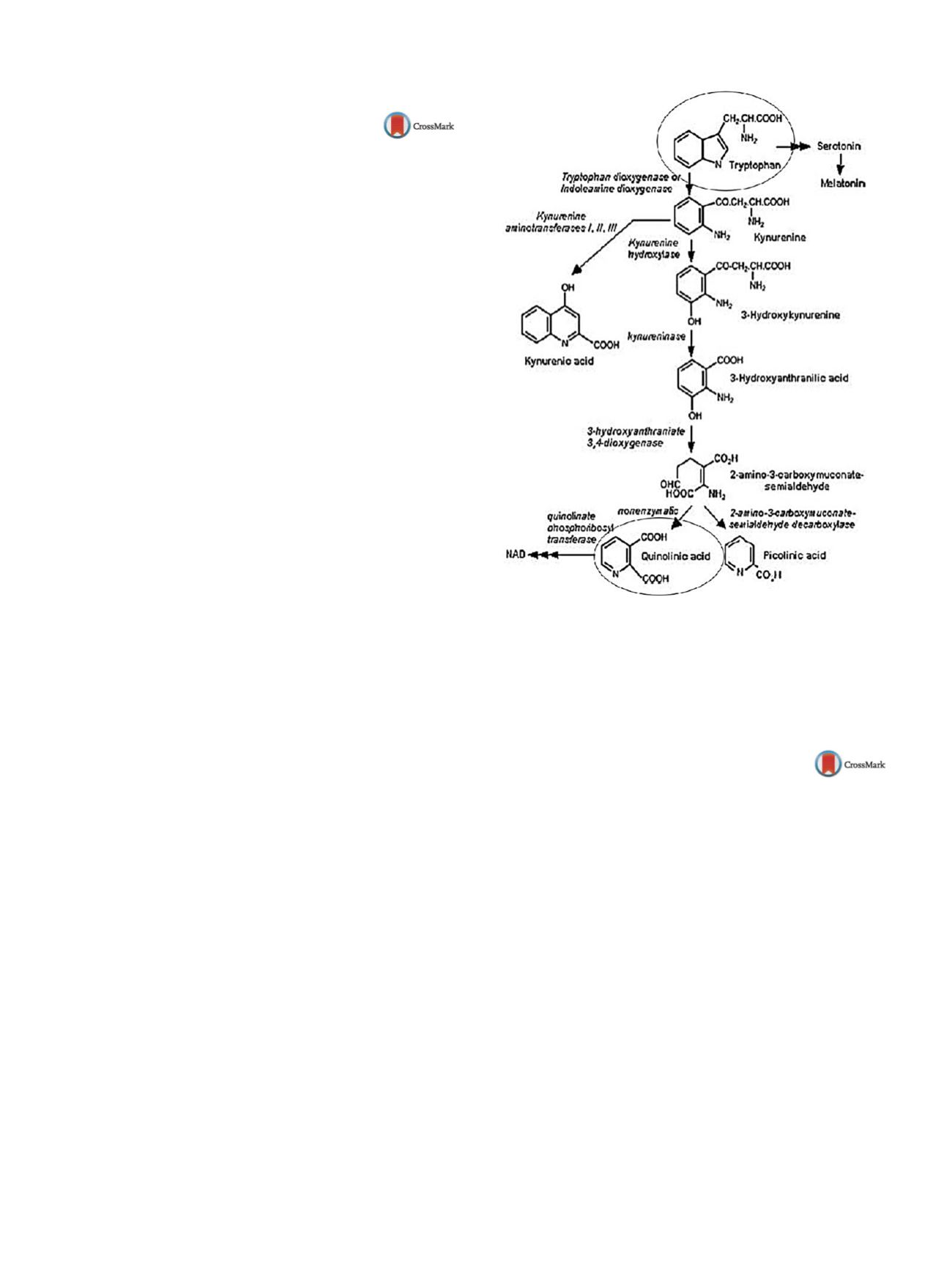

S480
25th European Congress of Psychiatry / European Psychiatry 41S (2017) S465–S520
EV0234
The Kynurenine pathway in
pancreatic carcinoma
C. Blesl
1, A. Tmava
1, A. Baranyi
1, A. Meinitzer
2, A. Painold
1,
A. Holl
1, V. Stadlbauer-Köllner
3, H.P. Kapfhammer
1, S. Mörkl
1 ,∗
1
Medical university of Graz, psychiatry, Graz, Austria
2
Medical university of Graz, clinical institute of medical and
chemical laboratory diagnostics, Graz, Austria
3
Medical university of Graz, gastroenterology and hepatology, Graz,
Austria
∗
Corresponding author.
Introduction
Pancreatic carcinoma (PC) belongs to the most
aggressive tumours worldwide, with a five year survival of 7%.
Mostly, diagnosis is made in late stages, as by now no early detec-
tion method is available. Symptoms of depression occur frequently
before diagnosis of PC. PC and depression are both known to go
along with changes in the kynurenine-pathway.
Objectives
This study aimed to examine the kynurenine pathway
( Figure 1 )and evaluate a possible depression in newly diagnosed
PC patients in comparison to healthy controls (HC).
Methods
26 PC patients and 26 age and sex matched HC partic-
ipated in this study. We investigated serum-levels of kynurenine,
kynurenic-acid, quinolinic-acid and tryptophan. To diagnose fea-
tures of depression SKID-II and BDI were used.
Results
None of the participants fulfilled criteria of a depres-
sive episode. Regarding BDI-scores, 2 PC-patients showed features
of mild depression. PC patients showed significantly lower
tryptophan-levels (
P
= 0.05) and significantly increased quinolinic-
acid levels (
P
= 0.01) compared to HC. Quinolinic-acid levels were
correlated with BDI (
r
= 0.23,
P
= 0.02).
Conclusions
Our study results imply IDO-activation and
kynurenine-pathway activation by showing decreased trypto-
phan and high quinolonic-acid levels in our PC patients compared
to HC. Larger studies are needed to gather further insight in the
kynurenine pathway in PC.
Figure 1
Disclosure of interest
The authors have not supplied their decla-
ration of competing interest.
http://dx.doi.org/10.1016/j.eurpsy.2017.01.564EV0235
The mortality gap. Patients with
serious mental conditions. Mortality,
morbidity and use of health services
L.H. Myklebust
1 ,∗
, R. Wynn
21
Fagavdelingen, Nordlandssykehuset HF, Bodø, Norway
2
The Arctic university of Northern Norway- clinical medicine,
telemedicine and e-health, Tromsø, Norway
∗
Corresponding author.
Introduction
Mental illness are among the most prevalent causes
of death
[1] .Larger population based studies are needed in order
to control the high mortality rates for psychiatric patients
[2] .Objective
To examine the relationship between psychiatric dis-
ease and somatic illness.
Method
Data from health-related databases and registries are
cross-matched by social security number for all psychiatric patients
in North-Norway for 2008–2016/2017.
n
= 4000–6000.
( Table 1 )Mortality is considered multifactorial, and risk factors may appear
as both direct and indirect causes. A high number of demographic,
somatic, psychiatric and service related variables allow the study
to control for interactions and confounding associations by multi-
variate analyses.
Results/planned papers
– 1 A case-register study of the comor-
bidity of mental and somatic disorders in North Norway: Research
protocol.
– 2 Increased mortality in psychiatric patients: A case-registry
study.


















